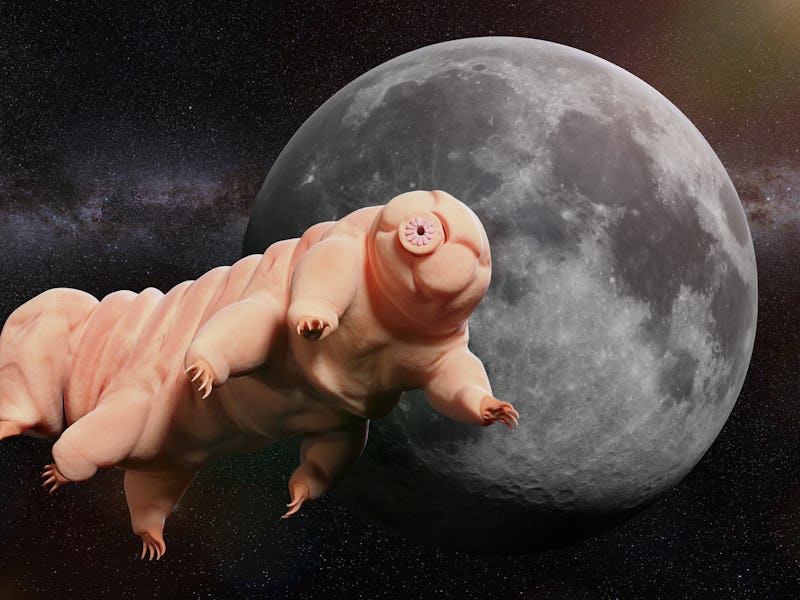Why tardigrades spilled all over the Moon in 2020
The microscopic creatures have survived the harsh conditions of space before.

In April 2019, the Israeli Beresheet spacecraft crash-landed on the Moon. Along for the ride were thousands of tiny creatures, which scientists now think may have spilled out and littered the lunar surface.
Beresheet had some unusual cargo. In an attempt to document life on Earth, a non-profit organization by the name of the Arch Mission sent a library to the Moon aboard the craft. The library of life included a stack of disks archiving 30 million pages of information about Earth, a copy of the entire English-language Wikipedia, human DNA samples, and a mega-payload of thousands of tardigrades.
INVERSE IS COUNTING DOWN THE 20 MOST UNIVERSE-ALTERING MOMENTS OF 2020. THIS IS NUMBER 7. SEE THE FULL LIST HERE.
Tardigrades are microscopic animals, otherwise known as water bears. They may also now be the only (potentially) alive organisms on the Moon.
Beresheet's strange occupants were dehydrated tardigrades, a process that essentially slows their metabolism down and suspends them in a near-life state. The idea was that, if they were to be rehydrated by someone or something, then they would come back to life, ostensibly telling future lunar explorers about life on Earth today.
Tardigrades have been shown to withstand the rigors of life in space.
There's just one problem — But the spacecraft carrying the tardigrades didn’t land according to plan and crashed on the lunar surface, losing contact with ground control.
Despite the impact, scientists believe that if anything survived the crash intact, it may well have been the tardigrades. The microscopic creatures were sandwiched between micron-thin sheets of nickel and suspended in epoxy, a resin-like preservative that acts like a jelly — potentially enough to cushion their landing.
This is not a totally outlandish idea. Tardigrades have been shown to survive the harsh conditions of space in the past.
A rendering of the Beresheet lunar lander. Things did not go to plan in real life.
In September 2007, two species of dehydrated tardigrades were exposed to the vacuum of space, solar radiation, or both onboard NASA’s Foton-M3 mission. Back on Earth, after they were rehydrated, the tardigrades exposed to the vacuum of space survived as though nothing had happened.
If they did stick the landing, the tardigrades would have a hard time finding liquid water on the lunar surface to rejuvenate them.
INVERSE IS COUNTING DOWN THE 20 MOST UNIVERSE-ALTERING MOMENTS OF 2020. THIS IS NUMBER 7. READ THE ORIGINAL STORY HERE.